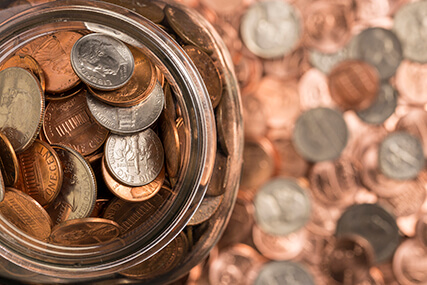One of the best decisions you can make for your financial future is to create and then stick to a budget. Taking a deep look at your finances can be intimidating, but it’s important to do especially if you are looking forward to buying a home, retiring or making another large purchase. Putting a budget together takes some work, but once it’s done, you’ll find it's easy to maintain and to adjust when needed.
Step 1: Determine Your IncomeThis amount should be your monthly take-home pay after taxes and other deductions. If you have other income such as child support, alimony payments or rental income, include this here, too.
Step 2: Determine Your ExpensesThis may be most difficult part, as you’ll need to gather quite a bit of data. Here you’ll want to record everything that you spend money on. While your regular monthly expenses such as rent/mortgage, car payments and insurance should be easy to calculate, you’ll need to include averages for things like haircuts, clothing, vacations and other expenses. You’ll also need to be honest - the indulgent spending that inevitably creeps into our daily lives such as a coffee run or a lunch out with friends needs to be accounted for here as well. Take a look at your last few bank statements to see where you may be spending. It’s easy to forget those small purchases, but they do add up.
Step 3: Choose Your Budget PlanNow that you have an idea of your income and expenses, you’ll need to decide what type of budget you’re looking for. There are several options such as a zero-budget, envelope system, or the 50/30/20 plan.
- Zero Budget: A zero budget will allocate every penny of your income to a specific category such as expenses, debt pay down and savings. The goal at the end of each budget cycle is to have a zero balance.
- Envelope System: The envelope system works best with cash. With this system, you allocate specific amounts of cash to different envelopes and once the money is gone, you can’t spend any more cash in that category.
- 50/30/20 Plan: A 50/30/20 plan allocates 50% of your income to expenses that are considered needs such as rent, utilities, groceries or gas. The next 30% goes towards wants such as travel, restaurant meals or hobbies. The last 20% should go to savings or debt reduction.
Use this worksheet for headstart in tracking your income and expenses:
Step 4: Adjust Your Habits
The whole purpose of creating your budget is to get control over your finances. You’ll most likely find out very quickly that you need to adjust your habits. Perhaps you’ll find that you are spending more for a car than you can afford or that your grocery bill is higher than you expected. Determine what you can cut out, what areas you need to increase your initial budget or do some searching for lower prices. Now is a good time to see if services are available at a lower cost. Can you change your insurance plans? Are there less expensive internet providers available? Can you cut cable? Take a look at each expense and determine what, if any, changes you can make.
Step 5: Live the PlanYour budget is an ever-changing plan. You may have to adjust regularly as expenses change. You may pay off a loan, or get a raise at work. When these things happen, you’ll need to revisit the plan and make sure you’re still allocating money where it's needed. What your budget looks like at age 20 may be vastly different than it would be at age 65 and planning for retirement.
Money management and budgeting can seem intimidating, but it’s worth your time and financial security to control your finances. Planning ahead can help during times of emergency, or help make your dreams of travel or homeownership happen. Your budget is your most powerful financial tool and your future is worth it!

